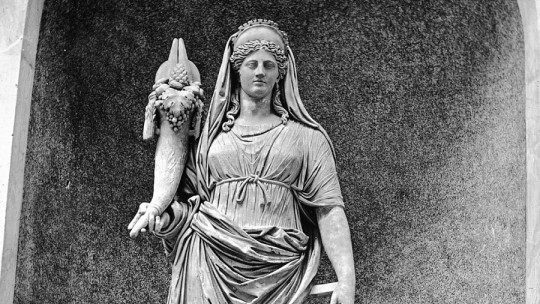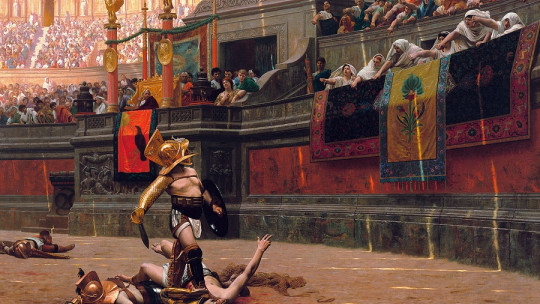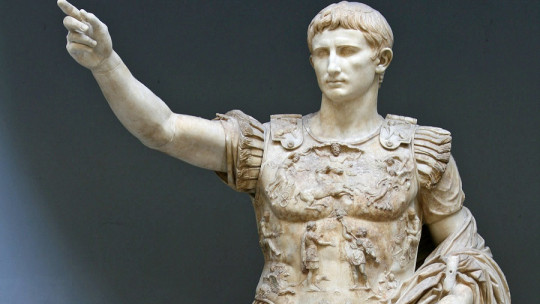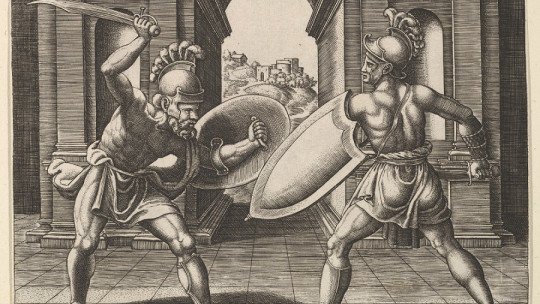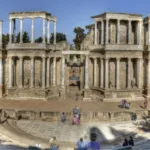Roman legends are characterized by combining human beings with mythical animals and fantastic elements of nature. Many of them aim to tell the founding of Rome, others allow us to understand the history and worldview of one of the greatest civilizations of Western culture. Below we will see 10 of the most popular Roman legends
10 popular Roman legends (and the meaning of each one)
Among other things, Roman legends relate imaginary events, with immortal idols accomplishing great feats. Many of these narratives have to do with the main points of the city and the fantastic elements that surround them; while others are more related to Greco-Roman myths The latter understood as fabulous narratives that explain reality in a non-rational way, but with great symbolic and cultural content.
Following this description, we will immediately see 10 important legends of Roman culture.
1. Hercules and Cacus
“Hercules and Cacus” is the name of a sculpture found in Piazza della Signoria, in Florence. It represents one of the episodes narrated by Virgil, where Hercules defeats the evil of the half-man, half-satyr giant, Cacus They say that Cacus had stolen some red oxen that were grazing in the Tiber Valley.
Soon, Hercules discovered the theft, but could not find the oxen or the person responsible. It was until he entered Cacus’s cave that he finally found them, and as punishment he dismembered him. Historical and anthropological explanations of this legend say that it is key to understanding the commercial evolution of the area as well as the beginnings of the cult of Hercules.
2. The wolf
This legend is part of the multiple explanations about the founding of Rome, since it represents the union of people from different civilizations, in constant connection with mythical animals. She comes from the mother of the twins Romulus and Remus, saved from murder by a servant who gave them a chance to escape through the waters of the Tiber River At the foot of the river there was a wolf who heard the children’s cries and dragged them to a cave where she took care of them for a while.
It was until the shepherd Faustulus approached, that the children were taken to Acca Larentia (shepherd’s wife). Thus, Romulus and Remus would grow up among humans and with their children. The symbol of the Wolf, since then represents the sacred animal of different ethnicities : Sacred God of the Manners, God of the Sabines, animal defender of the Latins and purifying and fertilizing God of the Etruscans. Furthermore, he is the founder of the cult of the Mother Goddess, representative of the genesis of life and the quality of protection.
3. Circe and the Peak King
Pico is remembered as a prophet, son of Saturn and father of Faun, as well as husband of Canente the nymph As Faunus was the father of King Latinus, Pico is considered by some to be the first king of Latium. It is said that he was a diviner, with a primitive appearance, always accompanied by a woodpecker (hence the name “Pico”). Beginning with Pico the Fortune Teller, the woodpecker is recognized as a prophetic bird.
They also say that by not reciprocating the love of Circe, the sorceress of the island of Aea, the latter definitively turned Pico into a woodpecker, retaining the same fortune-telling and prophetic powers that he had always had.
4. The Passetto di Borgo
Also known as “El Passetto”, this walled path that connects the Vatican with Castel Sant’Angelo has even been the site of science fiction films. Originally, this 800-meter-long road, erected in the year 1277, served as an escape route for many popes. That is to say, It was fundamental for the escape of clerics who were in danger from wars, looting and invasions
In fact, in some films, novels and video games this is represented by their direct access to the Vatican. Legend has it that he who crosses this path around 70 times will have good luck and will be able to escape its problems.
5. The Mazzamurelli Alley
Legend has it that there are capricious spirits, similar to elves, who live in a narrow street in Trastevere. They are known as the “Mazzamurelli” and there are different versions about the powers of these spirits
Some say that they have the function of protecting the individual and the people. They say that they could give the Romans archangel qualities, and at other times turn their soul into a little devil. It is also said that they live in the alley because there is a haunted house from the 19th century, where a man lived who posed as a magician who saw demons.
6. The Castle of Sant Angelo (Castel de Sant’Angelo)
On one side of the Tiber river, the third longest in Italy, there is a large monument that began as the mausoleum of Hadrian, Roman emperor from 117 to 138. The castle receives its name from a legend of salvation from the plague epidemic in the 590s.
They say that in the same year, during a procession commanded by Pope Gregory the Great , an archangel appeared above the castle holding a sword in his hands. A short time later, the plague disappeared completely; miracle that was attributed to the archangel. Since then, a statue has been placed on the mausoleum, commemorating this event. To this day the same statue has received different restorations.
7. The tomb of Nero and the Basilica of Santa María del Pueblo
After being declared a “public enemy” of Rome, due to the period of tyranny and the mass executions he had carried out, Emperor Nero was forced to leave the city. They say that when he arrived at Piazza di Poppolo (People’s Square) he was ready to commit suicide with the help of Epaphroditus, his secretary. The latter stabbed him just before a Roman soldier arrived at his location. In the same square he was buried, and shortly after, the Roman dynasty took care of disappearing his works, writings, and other objects that remembered his existence.
They say that since then Nero’s ghost appeared in the place where he was buried They also say that some people, practitioners of black magic, performed numerous rituals around his grave. They say that in the same place a walnut tree grew that marked the exact place where the emperor’s remains lie. For this reason, the walnut tree was considered cursed, and in the year 1099 an exorcism was performed on Nero’s tomb.
The latter after Pope Paschal II claimed to have seen the Virgin Mary indicating to cut down the walnut tree, unearth the remains of Nero, burn them and finally throw them into the Tiber River. This happened and immediately afterwards a chapel dedicated to the virgin was built, to give thanks for the exorcism. In the year 1472, a basilica (the Basilica of Santa Maria del Pueblo) was built in the place where Nero’s tomb previously stood.
8. Silent cup
They say that there was a water nymph called Lara. After having offended Jupiter, the main god of Roman mythology, the latter took Lara’s tongue away from her. On her return to Earth, Jupiter commissioned Mercury to accompany her and protect her from it. However, Mercurio took advantage of the fact that Lara no longer had a tongue, and raped her.
As a result of this, Lara gave birth to a pair of twins (the gods Lares), who were later responsible for protecting and monitoring the city’s borders. Since then Lara was known as Tacita Muda, the goddess of silence Currently, festivals and rituals are celebrated in honor of Lara, which not only remember the value of silence and prudence, but also denounce the association of these values with women and question the culture of rape.
9. The Dioscuri
The Dioscuri (a term that means “sons of Zeus” in Greek), are two mythical twin heroes, named Castor and Pollux, with great skills for fighting and riding horses. They are remembered for having rescued maidens, as well as for having avenged offenses and numerous deaths. These heroes are found in the Gemini constellation and have also been entrusted with the care of sailors, as it is believed that they They appear as a type of fireball produced during electrical storms
The Roman legend about the Dioscuri tells that the latter fought in the Battle of Lake Regilo, in which the Romans defeated the Latins. They say that they appeared above the spring in the forum of Rome, where a temple was built in their honor. Since then, the fountain next door was considered sacred and this spring was the main venue for multiple festivities that celebrated the Dioscuri.
10. The Tiber Island
Located on one side of the Tiber River, the Tiber Island is famous for housing the temple to Aesculapius, the Roman god of medicine. Legend has it that this island was formed after the last king of Rome, Lucius Tarquin the Proud, fell. As punishment for his despotic and tyrannical government, the Roman settlers threw his body into the Tiber River. Soon the Tiber Island was formed and the explanation was that, on the king’s body, sediments and even the grains of wheat that Tarquin had accumulated had accumulated.
Due to its obscure origin, This island caused fear to the Romans, who saw it as a sign of bad omen Shortly thereafter, a plague epidemic stopped just after a snake (symbol of the god of medicine) took up residence on the island. It was then when the monument to Aesculapius was built and when the inhabitants began to visit the Tiber island without fear.


